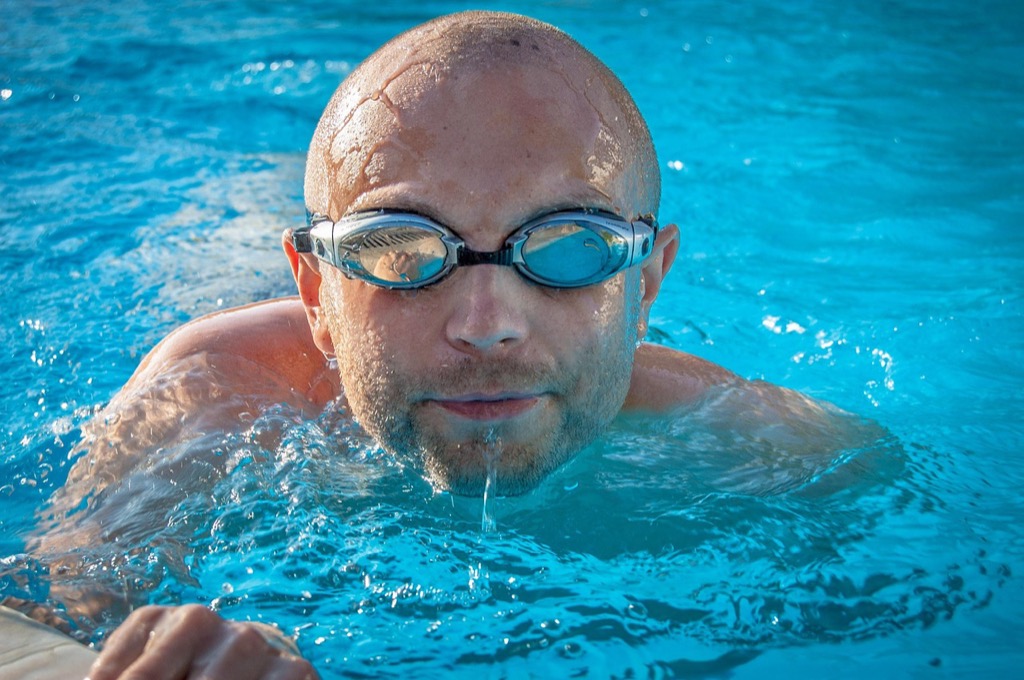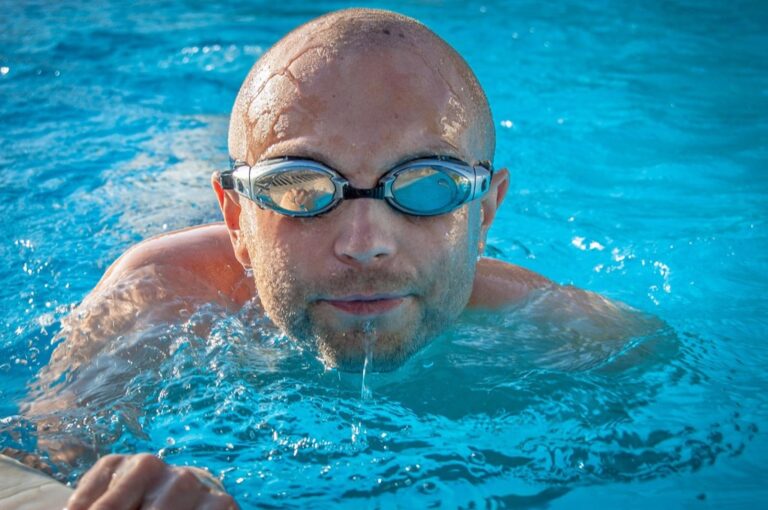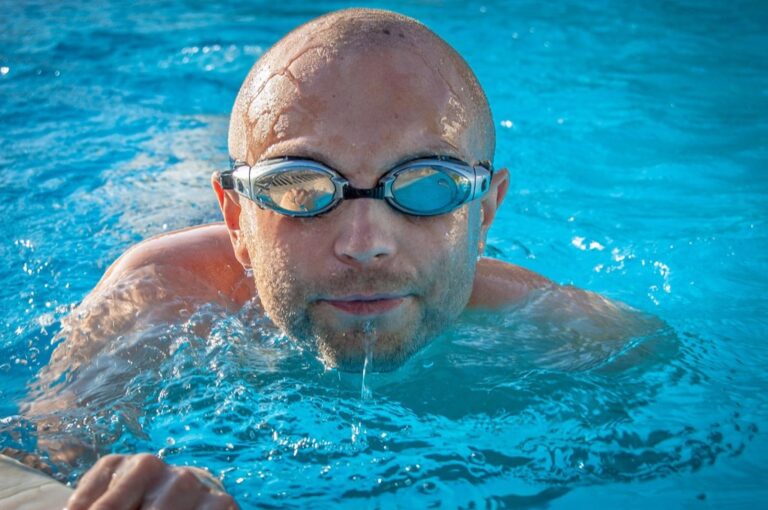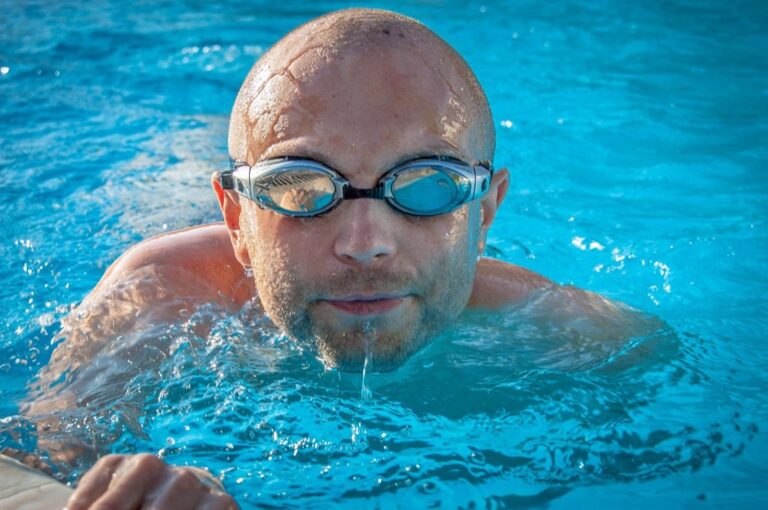7 Ways Pool Chemistry & Filtration Interplay That Maximize Performance
Discover how pool chemistry and filtration work together to slash maintenance costs, reduce chemical usage by 30%, and keep your water crystal clear year-round.
Your pool’s crystal-clear water depends on a delicate dance between chemistry and filtration that most pool owners don’t fully understand. When these two systems work together properly, you’ll spend less time scrubbing algae and more time enjoying your backyard oasis. The bottom line: Mastering how chemical balance and filtration systems interact will save you money on maintenance while keeping your pool swim-ready year-round.
Disclosure: As an Amazon Associate, this site earns from qualifying purchases. Thank you!
Understanding the Fundamental Connection Between Pool Chemistry and Filtration Systems
Enjoy safe, great-tasting water with the APEC ROES-50 Reverse Osmosis System. This WQA-certified, USA-assembled system removes up to 99% of impurities and includes a lead-free designer faucet.
Your pool’s chemical balance and filtration system operate as a unified team rather than separate components. When pH levels drift outside the 7.2-7.6 range, your filter struggles to capture contaminants effectively because particles don’t clump together properly.
Chemical imbalances directly impact filtration efficiency through a process called coagulation. Low pH creates acidic conditions that dissolve metal components in your filter, while high pH prevents sanitizers from working at full strength. This forces your filtration system to work overtime removing contaminants that chemicals should neutralize.
Your filter’s performance also influences chemical effectiveness in measurable ways. A clogged filter reduces water circulation, creating dead zones where algae and bacteria multiply faster than your sanitizer can eliminate them. Clean filters promote even chemical distribution, ensuring every gallon receives proper treatment as it cycles through your system.
Chlorine Effectiveness Depends on Proper Filtration Flow Rates
Keep your pool water clean and clear with Clorox Pool&Spa XTRABLUE 3" Chlorinating Tablets. These tablets kill bacteria, prevent algae, and contain conditioners for silky smooth water.
Your pool’s chlorine can’t do its job without proper water movement. When filtration flow rates drop below manufacturer specifications, chlorine distribution becomes uneven and sanitizer effectiveness plummets dramatically.
Optimal Circulation Ensures Even Chemical Distribution
Proper flow rates create the turbulence needed to mix chlorine throughout your entire pool. Without adequate circulation, you’ll develop dead zones where sanitizer levels drop dangerously low, allowing bacteria and algae to establish footholds in corners and behind ladders.
Clogged Filters Reduce Chlorine Contact Time
Dirty filters restrict water flow, cutting chlorine contact time with contaminants by up to 40%. This reduced contact time means your sanitizer can’t neutralize bacteria effectively, forcing you to add more chemicals while still dealing with cloudy water and potential health risks.
pH Balance Directly Impacts Filter Performance and Longevity
Your pool’s pH levels create a domino effect that either protects or destroys your filtration system. When pH strays from the 7.2-7.6 sweet spot, you’ll watch expensive filter components fail prematurely while fighting constant water quality issues.
High pH Causes Calcium Buildup in Filter Media
High pH creates alkaline conditions that precipitate calcium carbonate directly onto your filter elements. You’ll notice white, chalky deposits forming on cartridge pleats or DE grids within weeks of pH climbing above 7.8. This calcium scaling reduces filtration surface area by up to 50%, forcing your pump to work harder while capturing fewer contaminants.
Low pH Accelerates Filter Material Deterioration
Low pH turns your pool water acidic, eating away at filter fabrics and metal components like a slow-acting solvent. You’ll replace cartridge filters 3-4 times faster when pH drops below 7.0, as the acidic water breaks down polyester fibers and corrodes filter housings. Sand filters suffer too, with acid dissolving the sand media and creating channeling that bypasses filtration entirely.
Filtration Removes Contaminants That Consume Pool Chemicals
Maintain balanced pool water effortlessly with ARM & HAMMER Clear Balance tablets. These convenient tablets, formulated with baking soda, optimize chlorine performance and protect pool surfaces.
Your pool’s filtration system acts as the first line of defense against contaminants that devour your carefully balanced chemicals. When debris accumulates, it creates a chemical drain that forces you to add more sanitizers just to maintain basic water quality.
Debris and Organic Matter Increase Chlorine Demand
Leaves, pollen, and body oils consume available chlorine through oxidation reactions before it can sanitize your water. A single handful of decomposing leaves can demand up to 3 ppm of extra chlorine daily. Your filter captures these chlorine-hungry contaminants before they trigger costly chemical spikes.
Efficient Filtration Reduces Chemical Consumption Costs
Clean filters remove contaminants that would otherwise consume 30-50% more chlorine and pH adjusters throughout the season. You’ll spend significantly less on chemicals when your filtration system operates at peak efficiency. Proper filtration saves most pool owners $200-400 annually in reduced chemical costs.
Proper Water Circulation Prevents Chemical Hot Spots and Dead Zones
Your pool’s circulation system acts as the delivery network for sanitizers and pH adjusters. Without proper water movement, you’ll create areas where chemicals can’t reach effectively.
Stagnant Areas Allow Algae Growth Despite Adequate Chemical Levels
Corners and steps become algae breeding grounds when water doesn’t circulate properly. You’ll notice green patches forming in these dead zones even when your test strips show perfect chemical levels. Poor circulation creates pockets where sanitizer concentrations drop below effective levels, giving algae the foothold it needs to establish colonies that’ll spread throughout your pool.
Strategic Return Jet Positioning Maximizes Chemical Effectiveness
Angling your return jets creates a circular flow pattern that distributes chemicals evenly. Position jets to push water across the pool’s surface and down the opposite wall, eliminating stagnant corners. You’ll achieve 40% better chemical distribution by adjusting jets to work together rather than against each other, reducing the dead zones where contaminants accumulate.
Filter Media Type Influences Chemical Compatibility and Performance
Your filter media choice directly impacts how chemicals interact with your pool water and how efficiently they work. Different filter types create unique chemical environments that affect sanitizer effectiveness and maintenance requirements.
Sand Filters Require Different Chemical Maintenance Than Cartridge Systems
Keep your pool water clean and clear with the Intex SX1500 Sand Filter Pump. Featuring a 1500 GPH flow rate and Hydroaeration Technology for improved filtration, this pump also offers a convenient 24-hour timer for automatic operation.
Sand filters need higher chlorine levels because they trap larger particles while allowing smaller contaminants to pass through. You’ll typically maintain 2-4 ppm chlorine compared to cartridge systems that work effectively at 1-3 ppm.
Sand also creates buffering effects that can raise pH levels over time, requiring more frequent acid additions to maintain the optimal 7.2-7.6 range.
DE Filters Provide Superior Contaminant Removal for Lower Chemical Usage
DE filters capture particles as small as 2-5 microns, removing contaminants that would otherwise consume your sanitizer. This superior filtration allows you to maintain lower chemical levels while achieving better water quality.
You’ll use 20-30% less chlorine with DE systems because they’re removing the organic matter that creates chlorine demand before it can decompose.
Backwashing and Filter Cleaning Affect Water Chemistry Balance
Regular maintenance of your pool’s filtration system directly impacts your water’s chemical stability in ways that often catch pool owners off guard.
Frequent Backwashing Can Dilute Chemical Concentrations
Backwashing removes approximately 200-500 gallons of treated water from your pool each cycle, taking carefully balanced chemicals with it. Sand and DE filters require fresh water refills after backwashing, which dilutes chlorine levels by 0.5-1.5 ppm and shifts pH toward your local water supply’s baseline. You’ll need to retest and adjust chemicals within 2-4 hours after backwashing to maintain proper sanitizer effectiveness.
Dirty Filters Create Breeding Grounds for Bacteria and Algae
Clogged filter media becomes a nutrient-rich environment where bacteria multiply rapidly, consuming chlorine faster than you can add it. Organic debris trapped in dirty filters can harbor algae spores that release back into your pool, requiring 2-3 times more sanitizer to eliminate. Clean filters every 2-3 weeks to prevent this chemical drain that can increase your monthly chemical costs by $50-80.
Regular Filter Maintenance Optimizes Chemical Efficiency and Water Quality
Your filter’s cleanliness directly determines how well your pool chemicals perform their job. A well-maintained filtration system creates the perfect partnership with your chemical program.
Clean Filters Maximize Chlorine Contact Time
Clean filters ensure optimal water flow rates that give chlorine adequate contact time with contaminants. When filters become clogged with debris, water rushes past too quickly, reducing chlorine’s ability to neutralize bacteria and algae by up to 40%. You’ll notice this as persistent cloudiness despite proper chemical levels.
Proper Maintenance Schedule Reduces Overall Chemical Costs
Following a consistent maintenance schedule saves you $200-400 annually in chemical costs. Cleaning filters every 2-3 weeks prevents them from becoming breeding grounds for bacteria that consume 2-3 times more chlorine. This proactive approach eliminates the expensive chemical spikes needed to combat contamination from neglected filters.
Conclusion
Understanding the partnership between pool chemistry and filtration transforms your pool maintenance from reactive chaos to proactive control. When you optimize both systems working together you’ll spend less time troubleshooting problems and more time enjoying crystal-clear water.
Your pool’s performance depends on this delicate balance – neither system can succeed alone. By maintaining proper pH levels supporting efficient filtration and following consistent maintenance schedules you’ll create an environment where both chemistry and filtration enhance each other’s effectiveness.
The investment in understanding these interconnected systems pays dividends through reduced chemical costs extended equipment life and consistently swimmable water. Your pool becomes the relaxing retreat you envisioned rather than a constant source of maintenance headaches.
Frequently Asked Questions
What is the optimal pH range for pool water?
The optimal pH range for pool water is 7.2-7.6. When pH levels drift outside this range, your filter struggles to capture contaminants effectively. Low pH creates acidic conditions that can damage filter components, while high pH limits sanitizer effectiveness. Maintaining proper pH ensures your filtration system and chemicals work together efficiently.
How does poor filtration affect chlorine effectiveness?
Poor filtration significantly reduces chlorine effectiveness by restricting water flow and cutting chlorine contact time with contaminants by up to 40%. When flow rates drop below manufacturer specifications, chlorine distribution becomes uneven, creating dead zones where sanitizer levels drop dangerously low. This forces you to add more chemicals while still facing water quality issues.
How much money can clean filters save annually?
Clean filters can save pool owners $200-400 annually by removing contaminants that would otherwise consume 30-50% more chlorine and pH adjusters throughout the season. Efficient filtration prevents costly chemical spikes and reduces overall chemical consumption by capturing debris before it creates a chemical drain on your pool’s sanitizer system.
What’s the difference between filter types and chemical usage?
Sand filters require higher chlorine levels (2-4 ppm) compared to cartridge systems (1-3 ppm) due to their inability to trap smaller contaminants. DE filters provide superior contaminant removal, capturing particles as small as 2-5 microns, allowing for 20-30% less chlorine usage while maintaining better water quality than other filter types.
How often should I clean my pool filter?
Clean your pool filter every 2-3 weeks to prevent it from becoming a chemical drain. Dirty filters can become breeding grounds for bacteria and algae, consuming chlorine faster and requiring 2-3 times more sanitizer to eliminate. Regular cleaning prevents increased monthly chemical costs of $50-80 and maintains optimal water circulation.
How does water circulation affect chemical distribution?
Proper water circulation prevents chemical hot spots and dead zones where algae can grow even when chemical levels appear adequate. Angling return jets to create a circular flow pattern can enhance chemical distribution by 40%, ensuring sanitizers and pH adjusters reach all pool areas and reducing stagnant corners where contaminants accumulate.
Why do organic contaminants increase chemical demand?
Organic matter like leaves and body oils significantly increase chlorine demand because they consume sanitizers as they decompose. A handful of decomposing leaves can require up to 3 ppm of extra chlorine daily. Efficient filtration captures these contaminants before they create a chemical drain, preventing the need for excessive sanitizer additions.
How does backwashing affect water chemistry?
Frequent backwashing removes 200-500 gallons of treated water, which dilutes chemical concentrations. This requires retesting and chemical adjustments within 2-4 hours to maintain sanitizer effectiveness. While backwashing is necessary for filter maintenance, it’s important to monitor and adjust chemical levels promptly afterward to prevent water quality issues.









